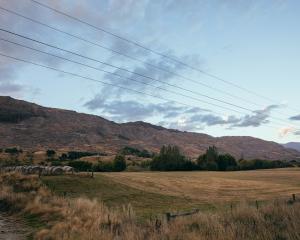Wanaka's Bullock Creek was cleared of lagarosiphon yesterday to help in the eradication of the aquatic weed from the lake.
Otago Regional Council staff spent the morning hand-weeding the creek, while a team from North Island company Aquateq used catch bags to prevent any small pieces of lagarosiphon floating downstream.
ORC environmental monitoring and operations director Jeff Donaldson said as there was no lagarosiphon south of Brownston St, the weeding was carried out downstream from there.
The work forms part of a wider 10-year management plan by the lagarosiphon management committee, of which the ORC is a member, to rid Lake Wanaka of the weed.
The committee has carried out significant clearance further up the lake, but is set to begin work using suction dredging in Roys Bay, next to the Wanaka township, this month.
''There's no point in doing that control if we've got lagarosiphon in a reservoir creek,'' Mr Donaldson said.
Spraying of the herbicide diquat also had been carried out recently around the marina area, but it was the first time the ORC had weeded Bullock Creek.
''The work has never been at the stage where Roys Bay and the marina was going to be tackled with the aim of eradication. It's only ever been control.''
Mr Donaldson said it was likely lagarosiphon had been transferred to the creek by people walking upstream from the lake or carrying tadpoles or cockabullies upstream and then letting them go, or from bird life in the area.
Otago Fish and Game chief executive Niall Watson said Bullock Creek was an important spawning and rearing area for Lake Wanaka and the timing of the weeding was good from a trout fishery point of view as there would be little effect from the resulting siltation.
''This is probably one of the less sensitive times for in-stream work. The problems arise during the trout-spawning season, which doesn't start for over two months yet, or the post-spawning incubation period when eggs are buried in the river gravels.
''But by this time of year the juvenile trout should be at a size where they should be able to cope with any associated siltation,'' he said.












